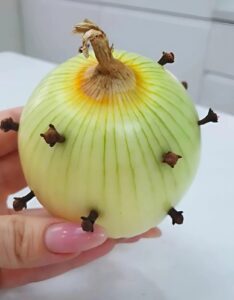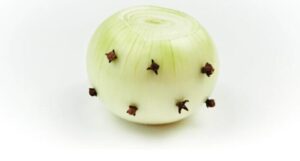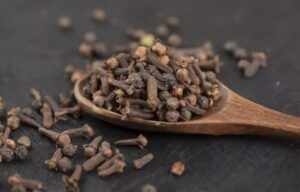
Cloves are not among the most common spices in cooking, but they have surprising properties when used correctly.
They are most often used for marinades or to flavor hot drinks like mulled wine. But in reality, this spice has many other uses, especially in the secrets of French cuisine.
The French are renowned for their mastery of culinary arts, creating refined dishes rich in flavors and aromas. In this culture, every detail matters.
In autumn and winter, when fresh herbs become scarce, a clever alternative comes to the rescue: the “oignon clouté” (clove-studded onion). This term, which literally means “onion studded with nails,” sparks curiosity.

In practice, these “nails” are actually cloves that are inserted into a peeled onion. The classic version typically contains 5 to 6 cloves, allowing for a subtle and spicy aroma to be released.
This onion is used not only in broths but also in pan-frying and slow cooking. For example, it can be placed in a pan with meat, added to vegetables, or placed on a baking sheet with a roast.
Cloves act as a natural flavor enhancer, bringing out the main flavors of the dish.
This technique has won over many chefs worldwide. Thanks to cloves, even the simplest dishes acquire a sophisticated and layered aromatic depth.
Try adding a clove-studded onion to a soup, stew, or slow-cooked dish, and you’ll see how your usual recipe takes on a whole new dimension.
Using this spice is not just about tradition—it’s also a way to explore cooking from a new and surprising perspective.




